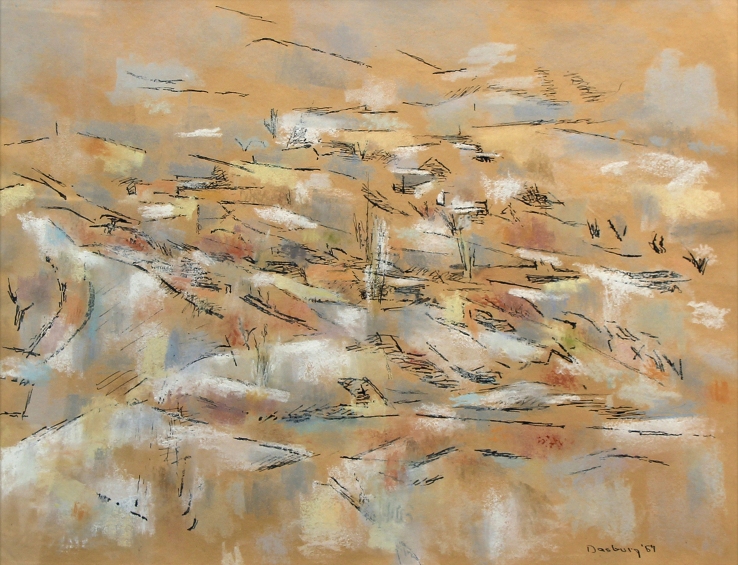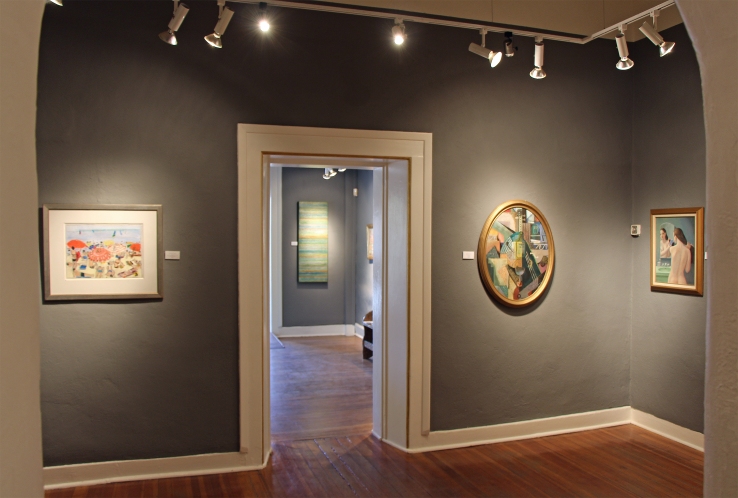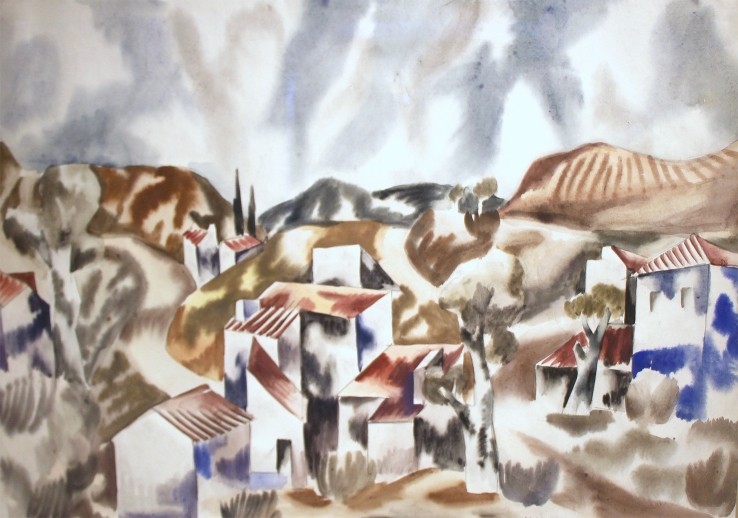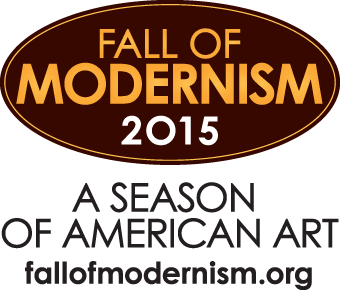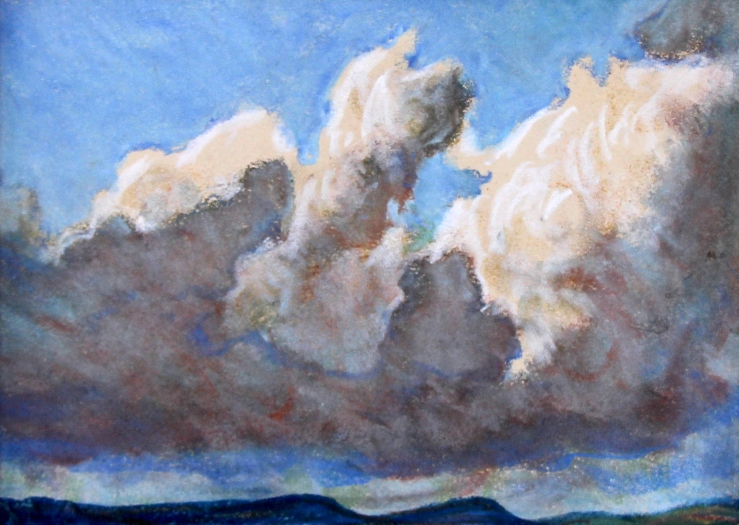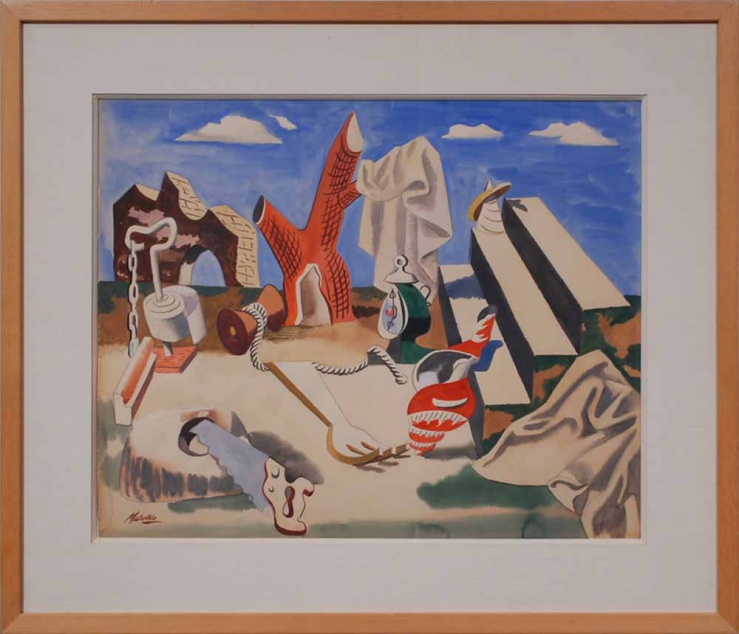 Mabel Dodge Luhan and Georgia O’Keeffe
Mabel Dodge Luhan and Georgia O’Keeffe
If you visit our SPRING OF MODERNISM show this month, two things will become abundantly clear about the 20th century artists in the exhibition. Firstly, they’re all linked, in one way or another, to the 1913 Armory Show in New York City. Secondly, they are all tied to each other. In fact, the modernists of the Santa Fe and Taos art colonies are so intertwined that we tried and failed to create a chart of their relationships. There are so many connections, it reminds us of Gertrude Stein’s Paris! Here’s just one line of the friendship chain, which begins with Stein herself:
MATULKA
Jan Matulka (1890-1972) was born in Austria-Hungary, now the Czech Republic. He moved to New York City in 1907 and enrolled at the National Academy of Design soon after. A Joseph Pulitzer Traveling Scholarship enabled him to visit the Desert Southwest in 1917, where he was inspired by the cultures of the Pueblo Native American Tribes. He maintained studios in Paris and New York during the 1920s, befriending Gertrude Stein, Andre Lhote and Max Weber.
DASBURG
Andrew Dasburg (1887-1979) also knew Stein. He was born in Paris and emigrated to New York City in 1892. He studied at the New York Art Students League and spent time in Paris with Stein, Henri Matisse and Morgan Russell as a young man. In 1913, he exhibited Lucifer (above) at the Armory Show, and was later invited to New Mexico by Mabel Dodge Luhan. He moved to Taos in 1921, and was part of Georgia O’Keeffe and Alfred Stieglitz’s circle here.
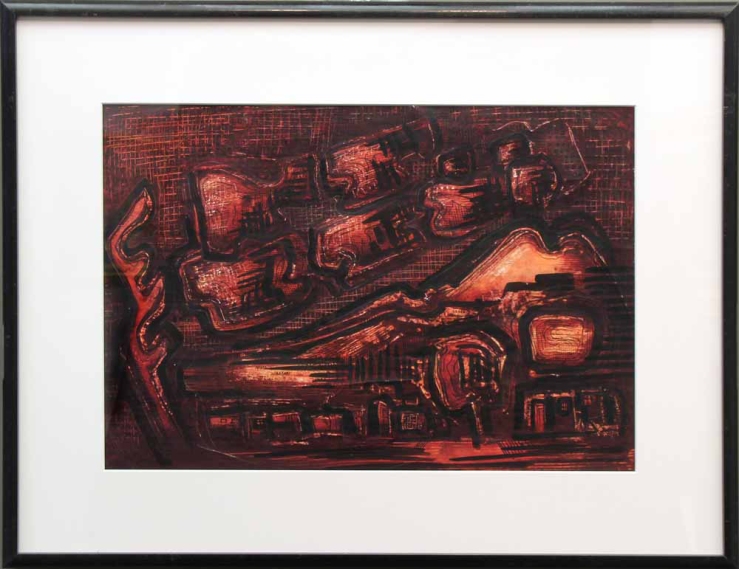 Cady Wells, Taos 1947, Ink and Watercolor on Paper
Cady Wells, Taos 1947, Ink and Watercolor on Paper
WELLS
Cady Wells (1904-1954) knew Luhan and O’Keeffe and studied under Dasburg. He grew up in Southbridge, Massachussets and traveled extensively as a young man, studying music and the visual arts before deciding to become an artist in his late 20s. He moved to New Mexico in 1932, where he found an enthusiastic mentor in Dasburg and drew inspiration from the rich culture of the Desert Southwest. The Smithsonian American Art Museum writes:
Portraying the Southwestern landscape in watercolor, Wells moved through various modernist idiots. His early work incorporated gestural, calligraphic lines suggestive of Chinese ideograms. Later he investigated the structure of natural forms [and the] pattern-like appearance of the landscape. Influenced by Dasburg, Raymond Jonson and Georgia O’Keeffe, Wells developed a personal semi-abstract style that brought considerable praise from his peers.
 Raymond Jonson, Oil No. 12, 1958, Oil on Canvas
Raymond Jonson, Oil No. 12, 1958, Oil on Canvas
JONSON
Wells’ friend Raymond Jonson (1891-1982) was born in Chariton, Iowa and grew up in Portland, Oregon. He attended the Chicago Academy of Fine Arts and the Chicago Art Institute as a young man, but his true artistic breakthrough came when he attended the 1913 Armory Show and saw the artwork of early abstractionist Wassily Kandinsky.
Jonson traveled to New Mexico for the first time in 1922, and moved here two years later. Here he founded the Atalaya Art School and took a teaching position at the University of New Mexico.
Along with his friends Emil Bisttram, Agnes Pelton and others, Jonson formed the Transcendental Painting Group (TPG) in 1938. The collective was inspired by early abstract artists like Wassily Kandinsky and Piet Mondrian, as well as Theosophy, Zen Buddhism and Dynamic Symmetry. The TPG only lasted a few years, disbanding in 1942 because of World War II. However, the collective’s influence endures in the Southwest and beyond. Some consider the group an heir to Russian Constructivism, Gino Severini and the Bauhaus.
BISTTRAM
Jonson’s friend Emil Bisttram (1895-1976) was born in Hungary and immigrated to New York City with his family at 11. It wasn’t until his mid-30s that he visited Taos, but he fell in love with the area and would become a major player in the art colony when he moved there a year later.In 1933 Bisttram helped open the first modern art gallery in Taos and in 1938 he co-founded the Transcendental Painting Group. He promoted the ideas of the collective through the Emil Bisttram School for Transcendentalism, where Janet Lippincott was one of his students.
LIPPINCOTT
Bisttram’s student
Janet Lippincott (1918-2007) was born in New York City to a wealthy family, and spent part of her childhood in Paris. There she learned about the aesthetic innovations of Picasso and Matisse. Back in New York, she took classes at the New York Art Students League as a teenager.During World War II, Lippincott enlisted in the Women’s Army Corps and was wounded. She pursued art studies in Colorado and San Francisco on the GI Bill, and also attended the Emil Bisttram School for Transcendentalism in Taos in 1949 and the
Alfred Morang Academy of Fine Art. In 1954, she moved to Santa Fe permanently and lived here for over five decades.Lippincott was considered part of a “second wave” of New Mexico modernists, who ventured to the Southwest after WWII. She is known as an
abstract expressionist, but her early modernist influences in Paris stuck with her, as evidenced in her career-spanning series of figurative prints.
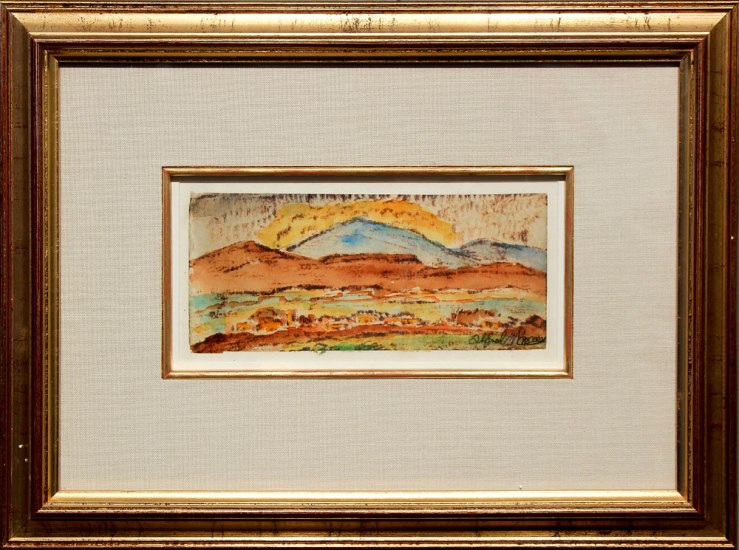 Alfred Morang, Blue Mountain, Yellow Sky, Ink and Watercolor on Paper
Alfred Morang, Blue Mountain, Yellow Sky, Ink and Watercolor on Paper
MORANG
As a young man, Lippincott’s teacher Alfred Morang (1901-1958) suffered from tuberculosis. He left his home in Portland, Maine in 1937 and came to New Mexico to recover in a dryer climate. The reports vary, but when Morang got off the train he was met by Randall Davey or Raymond Jonson, two of the city’s most established modernist artists. Morang’s bohemian manner quickly charmed the Santa Fe art world, and the City Different became his permanent home.
Late in his life, Morang moved to a Canyon Road studio just behind Claude’s Bar. Just across the street was an artist and writer’s compound run by Agnes Sims.
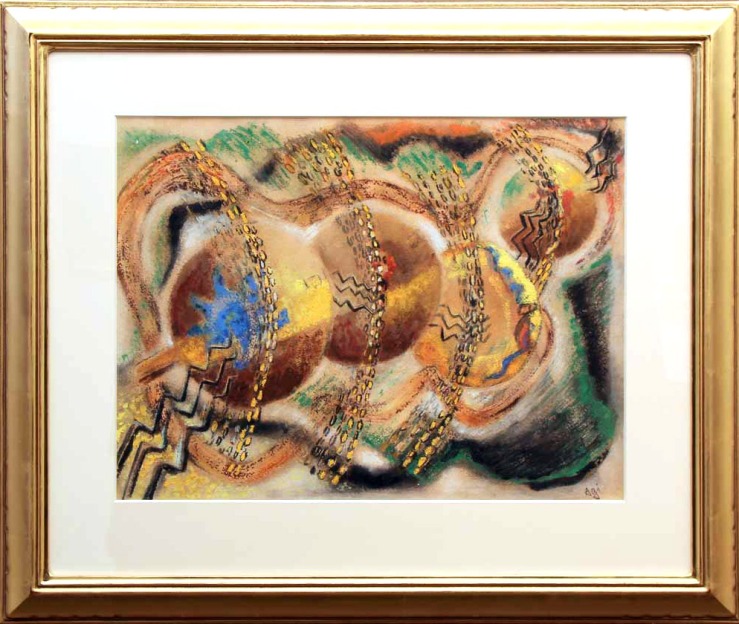 Agnes Sims, Dance Rattles, Watercolor on Paper
Agnes Sims, Dance Rattles, Watercolor on Paper
SIMS
Morang’s Canyon Road neighbor Agnes Sims (1910-1990) was born in Devon, Pennsylvania. She managed a marionette theater and worked as a textile designer in Philadelphia before moving to Santa Fe in 1938 and founding a Canyon Road artist’s compound. In New Mexico, she took an interest in the ancient petroglyphs of New Mexico’s Native American Pueblos, and received a grant to study and sketch them. Her archaeological work inspired a series of paintings and sculptures in which she developed her own semi-abstract symbolism.
Sims’ longtime partner was the literary editor of Harper’s Bazaar, and helped popularize Truman Capote‘s work. Capote was friends (and sometime enemies) with Georgia O’Keeffe. And so the circle comes back around to Andrew Dasburg!
We could do this for ages, but you get the point. The New Mexico art community was a western frontier of avant-garde innovation, forged by a group of passionate friends whose efforts gave birth to the Land of Enchantment of today. And thank goodness for that!
Click here to see all of the artwork in our Spring of Modernism show, and connect with us on Facebook, Twitter and Flickr for daily gallery news.
